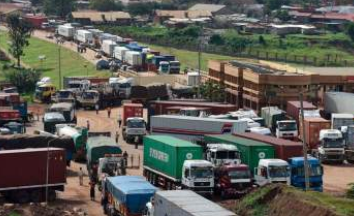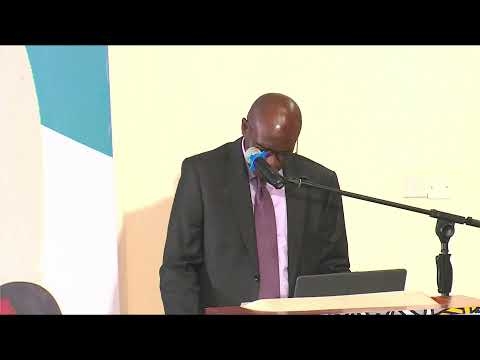
The planned Kenya–Uganda Expressway will be a game changer in transport along the Northern Corridor connecting the Port of Mombasa to the regions landlocked countries, shippers and traders now say.
Feasibility study for the 256km multi-national Kisumu-Kisian-Busia -Kakira-Malaba-Busitema expressway, funded by the African Development Bank (AfDB) to the tune of $1.4 million (Sh180.8 million) is complete, with the project confirmed as feasible and investment-ready.
The shippers Council of Eastern Africa (SCEA) which represents the interests of importers, exporters and players in shipping and logistics has said the project will reduce transit time along the corridor and improve timely delivery of goods to the transit countries.
“It will have a huge impact on the Port of Mombasa Port which has continued to witness increased port and transit cargo throughput,” SCEA chief executive Agayo Ogambi said yesterday.
In 2024, transit cargo increased by 17.4 per cent, causing huge pressure on roads and boarders.
“Today, a 7km queue is coming considered normal and which should not be the case. An efficient boarder should not have a queue over 1 km. The completion of the road, when finally done, will definitely reduce transit time, reduce fuel and enable trucks cover more km and possibly reach 120,000Km per year,” said Ogambi.
“Feasibility is just but the good start. The hard and most important part is getting the funding and implementation. This not withstanding, there are definitely enormous benefits. The costings for use must also be right.”
During a recent Market Sounding Conference in Kampala, Uganda, government officials, financiers and private sector leaders endorsed the expressway as a key infrastructure priority for the region.
The project is supported by AfDB and implemented under the EAC framework, with grant financing provided through the NEPAD Infrastructure Project Preparation Facility (NEPAD-IPPF).
The New Partnership for Africa's Development (NEPAD) is an economic development programme of the African Union.
Once developed, the corridor is poised to redefine mobility and trade between the two countries, cutting travel time, easing congestion and enhancing the flow of goods and people across one of East Africa’s busiest transport routes within the Trans-African Highway and the EAC Regional Trunk Road Network.
Current truck turnaround time between Mombasa and Kampala is around five to six days.
The feasibility studies recommend major upgrades on
both sides of the border. In Uganda, a new 60-kilometre greenfield expressway
will be developed between Jinja and Busesa through a Public–Private
Partnership, alongside dualling of the Busesa– Malaba and Busitema–Busia
sections, while Lwakhakha–Bumbobi will remain a single carriageway.
On the Kenyan side, works will involve dualling the Kisumu bypass and upgrading the Kimaeti–Lwakhakha road to bitumen standards. The Busia and Malaba One Stop Border Posts will also be rehabilitated to enhance clearance and efficiency.
Uganda’s Minister for Works and Transport Katumba Wamala, during the Kampala forum, underscored the strategic importance of the Northern Corridor as the main transport artery for Uganda and the Great Lakes Region, connecting Kenya, Uganda, Rwanda, Burundi the DRC and South Sudan to the port of Mombasa.
Uganda is the biggest transit destination for the region’s cargoes coming through Mombasa, accounting for more than 65 per cent of total volumes.
EAC deputy secretary general in charge of infrastructure, productive, social and political sectors, Andrea Malueth, highlighted the importance of designing a smart corridor that integrates digital technology, safety and social inclusion.
“Eighty per cent of projects fail at the preparation stage. The support provided by EAC development partners has enabled the community to prepare high-quality, bankable regional infrastructure projects that have successfully attracted both public and private financing,” he said.
Director in charge of Public–Private Partnerships at the Kenya National Highways Authority, Charles Obuon, said: “Regional transport infrastructure remains poorly connected due to missing links on cross-border corridors. This expressway project will catalyse economic growth and enhance the competitiveness of the EAC region.”
The expressway forms part of a broader network of
multinational road corridors being developed across East Africa to enhance
connectivity, facilitate trade and promote regional integration.
These include the Arusha–Namanga–Athi River (235 km), Voi– Taveta-Holili–Moshi–Arusha (240 km), Malindi–Lungalunga–Tanga–Bagamoyo (400 km) and the Masaka–Mutukula–Kumunazi–Bugene–Kyaka corridor linking Uganda and Tanzania.
Others are the Lusahunga–Rusumo–Kayonza–Kigali (162 km), Uvinza–Kanyani–Gisuru–Rusengo–Bugarama (375 km), Kisumu–Busia-Malaba–Jinja Expressway (256 km), and Ngozi–Kirundo–Kanyaru Bas–Nyamiyaga (176 km) roads.












